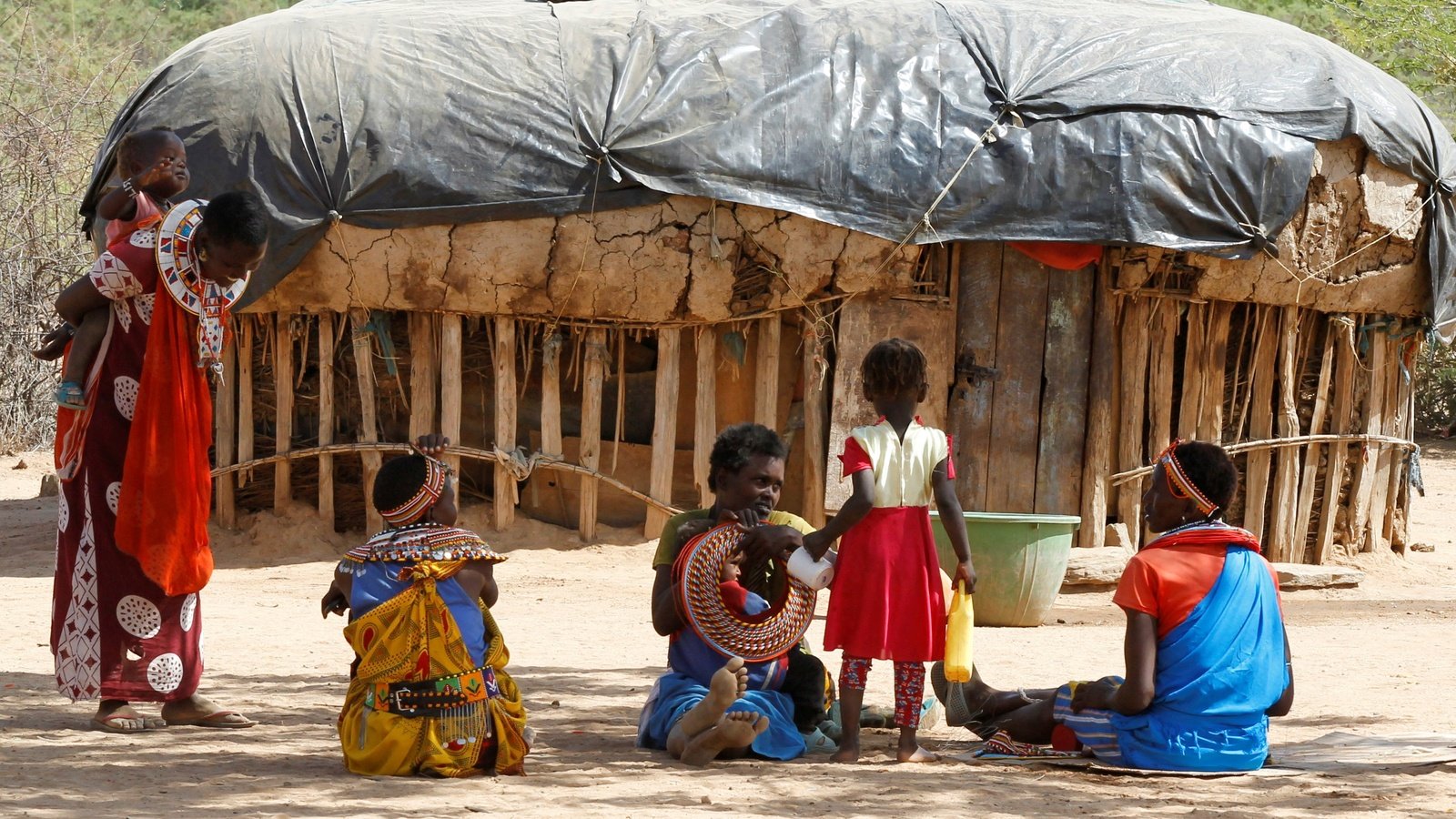Renewed Efforts are Urgently Needed to Fight Increase in Female Genital Mutilation/Cutting
Renewed Efforts are Urgently Needed to Fight Increase in Female Genital Mutilation/Cutting Council on Foreign Relations


Sustainable Development Goals (SDGs) and the Fight Against Female Genital Mutilation/Cutting (FGM/C)

In 2012, the United Nations General Assembly adopted ambitious Sustainable Development Goals (SDGs) to tackle gender inequality by 2030 as part of the Sustainable Development agenda. This effort included a pledge to end violence against women and girls “everywhere” and to “eliminate all harmful practices,” including female genital mutilation/cutting (FGM/C).
The World Health Organization defines FGM/C as “all procedures involving partial or total removal of the female external genitalia or other injury to the female genital organs for non-medical reasons.” The practice predominately occurs in Africa and the Middle East, but it also takes place in some countries in Asia and communities within North America and Europe.
Background
Those who carry out this traumatic procedure often claim that it is necessary to preserve the dignity of girls and make them more likely to be married. But the reality is that FGM/C is an act of violence and a grave violation of the rights of girls, given that it is often carried out without consent and can result in life-long health consequences or, in the most severe cases, death. Culturally, it is also indicative of a society in which women’s bodies are controlled by others.
Current Status
To date, several countries have made significant progress toward ending FGM/C. Rates have dropped significantly in Ethiopia, Kenya, Sierra Leone, Burkina Faso, and elsewhere. Many countries have passed laws banning FGM/C, and advocates have carried out the painstaking work of educating parents and local leaders about its harmful effects. This progress is commendable, but significant work remains to be done. Without accelerated efforts, there is no chance of getting anywhere close to eliminating FGM/C by 2030.
Recent Data and Challenges
Recently, the UN Children’s Fund (UNICEF) released data showing that the total number of girls who have undergone FGM/C has increased since 2016. Today, an estimated 230 million women and girls have endured FGM/C, up from an estimated 200 million since the last time a global estimate was released in 2016. This is largely due to population growth in countries like Somalia, where the practice remains widespread. It is also due to increasing levels of conflict, coups, and instability amidst a larger backsliding on the rights of women and girls globally.
To take one extreme example, Gambia is now challenging the very idea of having an SDG that includes eliminating FGM/C. In a move believed to be the first of its kind, lawmakers announced that they are currently working to reverse legislation passed in 2015 that bans the practice, arguing that such an effort is necessary to uphold religious loyalty and safeguard cultural norms and values. Forty-two of forty-seven predominately male members of parliament voted affirmatively on March 18 to advance the legislation. In response, Action Aid Gambia said, “We are horrified to see a bill being brought forward that would bring back FGM/C, which we should be clear is an act of violence against women and girls…Any move to lift the ban would…send a dangerous signal to other countries thinking of taking the same path.” Given how much contagion there has been in terms of backsliding on gender equality globally, we should take this warning seriously.
What Needs to Happen?
The good news is that there is support for ending FGM/C in many communities where it is practiced. A recent report by UNICEF found that two-thirds of both men and women in households in the Middle East and Africa, which include women who have undergone FGM/C, want to see the practice stopped. But this support will not automatically translate into a significant reduction in FGM/C rates. In fact, UNICEF estimated that the global decline rate must be twenty-seven times faster than what we see now to reach the 2030 SDG goal. This will require increased advocacy and investment, particularly for locally-led initiatives in the most severely impacted communities.
It will also require an intensified focus on the empowerment of women and girls, especially in education. While programmatic support for combatting FGM/C is important, it has been insufficient. This is where the United States could play a more significant role through targeted initiatives aimed at empowering adolescent girls. Currently, the United States provides funding to the UN Population Fund (UNFPA) and UNICEF Joint Programme on the Elimination of FGM, and it should continue to do so. But a broader investment in education must also be seen as part of the solution. The United States spends hundreds of millions of dollars annually in foreign assistance sending children to primary school, but it needs to increase investments focused on ensuring that older girls remain in school. Girls who have higher levels of education are better able to advocate for themselves for their future children. Studies also show that women with even minimal education are less likely to allow their children to undergo FGM/C. This is particularly important in countries where FGM/C is practiced shortly after birth or in the years before a child turns five.
In October of last year, the U.S. Agency for International Development announced $140 million to support the U.S. Global Strategy to Empower Adolescent Girls, a multi-agency initiative launched in 2016 aimed at addressing the multitude of challenges facing girls around the globe. The initiative lapsed under the Trump Administration, but the investment announced by the Biden Administration is a welcome step in revitalizing the strategy. Importantly, the USAID announcement included an effort focused on improving education outcomes for adolescents and getting out-of-school girls—including child brides
SDGs, Targets, and Indicators
-
SDG 5: Gender Equality
- Target 5.3: Eliminate all harmful practices, such as female genital mutilation/cutting (FGM/C)
- Indicator 5.3.1: Proportion of women aged 15-49 years who have undergone FGM/C
-
SDG 16: Peace, Justice, and Strong Institutions
- Target 16.2: End abuse, exploitation, trafficking, and all forms of violence against and torture of children
-
SDG 3: Good Health and Well-being
- Target 3.7: Ensure universal access to sexual and reproductive health-care services, including for family planning, information, and education, and the integration of reproductive health into national strategies and programs
- Indicator 3.7.2: Adolescent birth rate (aged 10-14 years; aged 15-19 years) per 1,000 women in that age group
-
SDG 4: Quality Education
- Target 4.1: By 2030, ensure that all girls and boys complete free, equitable, and quality primary and secondary education leading to relevant and effective learning outcomes
- Indicator 4.1.1: Proportion of children and young people (a) in grades 2/3; (b) at the end of primary; and (c) at the end of lower secondary achieving at least a minimum proficiency level in (i) reading and (ii) mathematics, by sex
Table: SDGs, Targets, and Indicators
| SDGs | Targets | Indicators |
|---|---|---|
| SDG 5: Gender Equality | Target 5.3: Eliminate all harmful practices, such as female genital mutilation/cutting (FGM/C) | Indicator 5.3.1: Proportion of women aged 15-49 years who have undergone FGM/C |
| SDG 16: Peace, Justice, and Strong Institutions | Target 16.2: End abuse, exploitation, trafficking, and all forms of violence against and torture of children | N/A |
| SDG 3: Good Health and Well-being | Target 3.7: Ensure universal access to sexual and reproductive health-care services, including for family planning, information, and education, and the integration of reproductive health into national strategies and programs | Indicator 3.7.2: Adolescent birth rate (aged 10-14 years; aged 15-19 years) per 1,000 women in that age group |
| SDG 4: Quality Education | Target 4.1: By 2030, ensure that all girls and boys complete free, equitable, and quality primary and secondary education leading to relevant and effective learning outcomes | Indicator 4.1.1: Proportion of children and young people (a) in grades 2/3; (b) at the end of primary; and (c) at the end of lower secondary achieving at least a minimum proficiency level in (i) reading and (ii) mathematics, by sex |
Analysis
1. Which SDGs are addressed or connected to the issues highlighted in the article?
The article addresses or connects to the following SDGs:
– SDG 5: Gender Equality
– SDG 16: Peace, Justice, and Strong Institutions
– SDG 3: Good Health and Well-being
– SDG 4: Quality Education
2. What specific targets under those SDGs can be identified based on the article’s content?
Based on the article’s content, the specific targets identified are:
– Target 5.3: Eliminate all harmful practices, such as female genital mutilation/cutting (FGM/C)
– Target 16.2: End abuse, exploitation, trafficking, and all forms of violence against and torture of children
– Target 3.7: Ensure universal access to sexual and reproductive health-care services, including for family planning, information, and education, and the integration of reproductive health into national strategies and programs
– Target 4.1: By 2030, ensure that all girls and boys complete free, equitable, and quality primary and secondary education leading to relevant and effective learning outcomes
3. Are there any indicators mentioned or implied in the article that can be used to measure progress towards the identified targets?
Yes, there are indicators mentioned or implied in the article that can be used to measure progress towards the identified targets:
– Indicator 5.3.1: Proportion of women aged 15-49 years who have undergone FGM/C
– Indicator 3.7.2: Adolescent birth rate (aged 10-14 years; aged 15-19 years) per 1,000 women in that age group
– Indicator 4.1.1: Proportion of children and young people (a) in grades 2/3; (b) at the end of primary; and (c) at the end of lower secondary achieving at least a minimum proficiency level in (i) reading and (ii) mathematics, by sex
These indicators can be used to measure progress towards the targets of eliminating FGM/C, ending violence against children, ensuring access to sexual and reproductive health services, and achieving quality education for all.
SDGs, Targets, and Indicators
| SDGs | Targets | Indicators |
|---|---|---|
| SDG 5: Gender Equality | Target 5.3: Eliminate all harmful practices, such as female genital mutilation/cutting (FGM
Copyright: Dive into this article, curated with care by SDG Investors Inc. Our advanced AI technology searches through vast amounts of data to spotlight how we are all moving forward with the Sustainable Development Goals. While we own the rights to this content, we invite you to share it to help spread knowledge and spark action on the SDGs. Fuente: cfr.org
Join us, as fellow seekers of change, on a transformative journey at https://sdgtalks.ai/welcome, where you can become a member and actively contribute to shaping a brighter future.
|








